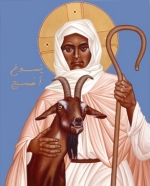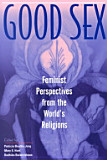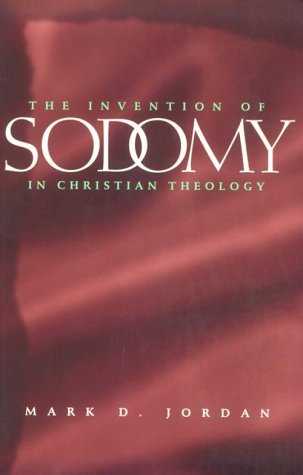The essays in the compilation Good Sex: Feminist Perspectives from the World’s Religions include the views of several Jewish and Christian feminist scholars. Though not all of the authors identify as lesbian, they share similar views and concerns. It is interesting to note that in many ways their unity is found more in their shared gender identity than in their sexual preferences. This is the first feature of these essays that I found striking: there is no analogous "masculist" movement nor a shared set of concerns among gay and straight men that would provide an overarching backdrop in a male-oriented conversation. However, as I reflect on this a possible explanation appears to be that women, whether gay or straight, are able to identify with each other’s oppression within our framework of power dynamics. Straight men, who most often occupy the position of privilege in our society, are less apt to identify with the oppression faced by gay men, as to do so could result in a loss of privilege.
Author: Bryce
Church Reform in the 11th Century
The eleventh century saw a wave of reformers in the papacy that sought to effect changes in the way that ecclesial authority was realized. A series of popes including Leo IX, Gregory VII and Calixtus II worked to reform the election of church authority by stamping out simony (the practice of buying church offices) and enforcing celibacy for all priests (eliminating heirs to whom power could be passed down). In addition to these reforms, the church sought to establish itself as a separate spiritual authority superior to that of various European monarchs. At the zenith of papal authority, Innocent III enjoyed authority that extended over many of the secular rulers of Europe.
Reflections on The Invention of Sodomy
In The Invention of Sodomy Mark Jordan traces the roots of the term Sodomy from its first appearance in the Middle Ages through a complex evolution witnessed in various religious texts over three centuries. Jordan begins his work by asserting that "the category ‘Sodomy’ [is] problematic no matter where or how it is used" (6). Based on the context provided by each of the texts selected, we find quickly that the meaning of the word Sodomy varies widely.
National Flavors in the Christianization of Europe
As the Christian faith spread throughout Europe its message was received by many disparate tribes. These various groups found identity in ethnic distinctions of shared language and culture. While often serving as barriers or diplomatic challenges, these differences sometimes played key roles in how the gospel was received and spread among a people. The Saxon Gospel provides one such example.
Continue reading "National Flavors in the Christianization of Europe"
Intellectual and Religious Cultural Influences on Early Christianity
As Christianity continued to spread throughout the ancient world its adherents were both influenced and challenged by religious and philosophical ideas such as astrology, Stoicism, Neo-Platonism and Gnosticism. Sometimes Christian apologists tried to reconcile these various ideas into a unified whole, while at others they challenged their influence, refuting some ideas as heretical.
Continue reading "Intellectual and Religious Cultural Influences on Early Christianity"
Apologetics in the Early Church
As the early Christians interacted with faiths differing from their own they began to develop apologies to explain their religious convictions and to persuade their readers of the validity of their newfound faith. Rather than beginning from a totally alien proposition, the two apologists that we have read, Mathetes, or the “disciple” ("mathetes"), and Justin Martyr, attempted to identify points of contact between their own faith and those of their readers. Among their claims are an assurance that Christians are much like their non-Christian neighbors in matters of culture and custom, appeals to reason, and acknowledgement of the accomplishments of the Greek philosophers and historians.
Your Free Speech in Jeopardy
 Last month I received an email from Joyce Meyer Ministries with a loud subject line:
Last month I received an email from Joyce Meyer Ministries with a loud subject line:
Your Free Speech in Jeopardy
When I opened the message I found the "Hate Crimes Bill Update." See a PDF of the notice here.
Final One-page Reflection: Who is Jesus?
 Over the course of the semester we have examined various images of Jesus. I find myself drawn a few in particular to Denny Weaver’s Narrative Christus Victor, with its nonviolent overcoming of the systemic evils of the world and to the empathic subjective view of the atonement through which the sacrifice of Jesus and his ability to identify with the suffering of humanity elicit a response of love and transformation.
Over the course of the semester we have examined various images of Jesus. I find myself drawn a few in particular to Denny Weaver’s Narrative Christus Victor, with its nonviolent overcoming of the systemic evils of the world and to the empathic subjective view of the atonement through which the sacrifice of Jesus and his ability to identify with the suffering of humanity elicit a response of love and transformation.
Statement of Faith – Spring ’07
As a final assignment for Christian Doctrine seminarians are required to write a set of statements that attempt to formulate their current stances on the major categories of systematic theology. What follows is my own attempt to encapsulate my views.
The Christological Symbolism of E.T. the Extra-Terrestrial
"He is afraid. He is alone. He is three million light years from home." The Christ figure in this Steven Spielberg film is none other than the title character, E.T. – a squat, wrinkled alien no more than three feet tall. [Instructor Comment: So, not ontologically human.] It is clear that he would never pass for human. Suggested likenesses offered in the film range from coyote to iguana, leprechaun to goblin. His chest cavity is transparent, revealing a "heart light" that shines when he is in communication with his mother ship. Finally, when using his special ability to cure sickness and restore life, E.T. touches his subject with an index finger that glows brightly.[1] Yet even in his difference, there is enough of what makes us human found within this alien frame to make us feel secure and at home in his presence. Though the physical strangeness of this character could be off-putting, Spielberg went to great lengths to ensure that E.T. would have many human expressions and gestures. [Instructor Comment: Psychologically human-like?]
Continue reading "The Christological Symbolism of E.T. the Extra-Terrestrial"

